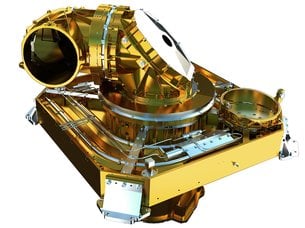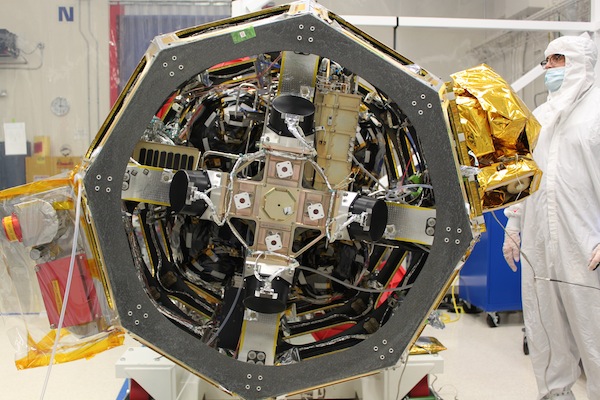This article is more than 1 year old
Lasers to carry 622 Mbps Earth-Moon link
Broadband in spaaaaace as NASA, ESA, prepare for liftoff with new comms kit
If all goes to plan, the next few weeks will bring a revolution in communication with spacecraft, with two space-based laser communications demonstrations due to take to the skies.
The European Space Agency's Alphasat – also the largest telecommunications satellite built in Europe – is due to launch on July 25. While the Astrium-built, 3.5 tonne dry mass satellite will primarily serve the Inmarsat network, the experiments it carries include an optical communication terminal.
The TDP 1 broadband data relay project has been on the drawing board since 2008, and if all goes well, it will take a 300 Mbps data stream from Germany's Tandem-X satellite, using binary phase shift keying to achieved a planned bit error rate of 10-8 on an optical channel capable of 2 Gbps operation. The Tandem-X data will then be relayed to Earth on a conventional Ka-band channel.

Laser comms payload due for launch
aboard ESA's Alphasat July 25
NASA's more ambitious project, due to lift during August, will use optics not for space-to-space communications, but for broadband space-to-ground communications – all the way to the moon.
Travelling on the upcoming LADEE (Lunar Atmosphere and Dust Environment Explorer) spacecraft, the laser communications system uses a 30cm telescope to direct what NASA hopes will be a 622 Mbps communications stream from lunar orbit to Earth.
The ground segment has four 15 cm telescopes to act as transmitters and four 40 cm reflective telescopes as receivers.

NASA's LLCD laser communications experiment integrated onto LADEE
As Nature notes, the point of all this is that as their data collection capacity approaches levels of petabytes per year, they're also running into the constraints of the radio channels they currently use. In addition, spectrum regulation limits what frequencies satellites can use.
Laser overcomes the downlink capacity challenges, and for now at least, sidesteps spectrum regulation.
Yes, this stuff is exotic. But history tells us it's eminently foreseeable that these experiments will one day be put to work in more prosaic terrestrial applications. ®
